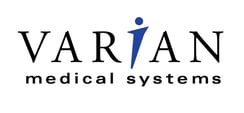 Previously I discussed the top five critical success factors for a project. Remember the word of caution mentioned in that blog – “slick, leading-edge technology alone will not guarantee project success.” So what factor from that list must be coupled with the technology to ensure a successful adoption of your EPM or SAP BPC solution? The Human Factor, or quite simply, the people that will be involved in using the system once deployed can make or break your project. I’ll discuss in this blog why Organizational Change Management (OCM) should be one of your Top 5 Critical Success Factors for your EPM or SAP implementation.
Previously I discussed the top five critical success factors for a project. Remember the word of caution mentioned in that blog – “slick, leading-edge technology alone will not guarantee project success.” So what factor from that list must be coupled with the technology to ensure a successful adoption of your EPM or SAP BPC solution? The Human Factor, or quite simply, the people that will be involved in using the system once deployed can make or break your project. I’ll discuss in this blog why Organizational Change Management (OCM) should be one of your Top 5 Critical Success Factors for your EPM or SAP implementation.
What is Organizational Change Management versus Project Change Management and do I need both?
Project Change Management - Projects typically need to be performed and delivered under certain constraints. Traditionally, these constraints are “scope," "time," and "cost". A Project Change Management process determines the impact of potential changes on these constraints and facilitates the management and processing of potential changes in an organized fashion. As the primary focus of a project is to optimize the benefits (ROI) of the project, proposed changes are assessed by the Change Control Board to determine if they are deemed critical to the project success or may generate additional benefits. Many project fail due to poor scope management.
Organizational Change Management – OCM refers to a methodology or systematic process for transitioning individuals, teams, and organizations to a desired future state. A structured approach is necessary to ensure changes are smoothly and successfully implemented to achieve lasting benefits. Organizational Change Management aligns groups’ expectations, communicates the need for and impact of the change and prepares all levels of the organization for the change.
Project teams often ignore the people side of change as they focus on the technical aspects of the solution. Too often, technical success equates to project success. But what if the technology works like a dream but no one wants to use it, understands why it is important to use, or doesn’t understand how to use it. The likely outcome is the solution will not be embraced nor utilized by the employees. If the solution meets all requirements and works to spec but is not utilized, is that still a successful implementation? I suppose not as any product that is made well but does not sell is not a success! Effective BPC Project Management Methodologies at Column5 succeed as there is an effective intersection of Project Leadership, Project Management and Change Management. If the people impacted by a project do not support nor engage in the change, then the objectives of the project will not be met, in short, if people don’t understand the particulars of the change including new processes, systems and job responsibilities then those particulars will not be achieved and we fail to achieve the purpose of the project.
The Column5 Project Methodology, coupled with the SAP ASAP methodology, will provide a framework for delivering an overall Change Management Plan that creates awareness, desire and knowledge as part of your project implementation ensuring you aren’t left with a slick automobile without a driver!
Related articles:
EPM Project Management Methodologies Untangled
The Top 5 Critical Success Factors for Your EPM Project
EPM Project Management Success: The 3 Lines of Defense to Reducing Risk on an SAP BPC EPM Project
The Changing Role of Finance: Results Reporting to Business Partner
 Webcast: Varian Medical Systems Partners with Column5 to Help Implement Award Winning SAP Business Planning and Consolidation (BPC) Solution
Webcast: Varian Medical Systems Partners with Column5 to Help Implement Award Winning SAP Business Planning and Consolidation (BPC) Solution
Join Varian Medical Systems as they discuss their decision to implement Global Cost Center Planning using SAP Business Planning and Consolidation (BPC) with Column5 as a partner. Learn how best practices were used to help them win an internal CFO award. Varian will explain the challenges and their successes achieved to date along with their EPM roadmap.











